Back in August while on a trip to Chicago, I snuck in an early morning VO2Max test – purely for the goal of understanding how the New Leaf Fitness metabolic profile tests worked, in an effort to get more accurate calorie calculations on Garmin devices.
As I’ve detailed before, there are a slew of ways to have calorie information generated on your Garmin device, ranging from not-terribly-accurate (mass/distance), to fairly accurate (heart rate). The most accurate however is one based on two tests that measure your specific calorie burn at various levels, and then allow the Garmin unit to replicate that. The problem is, there’s actually very little information on how this all works, so out of pure curiosity – I set out to find out.
So why Chicago? Well, there isn’t too many New Leaf testing centers in the DC area, and the few that there were – were pretty far away and not in terribly convenient locations. But, after a few calls to some of the Chicago area Equinox’s, I found one that indeed had the gear and knew how to use it. Note, that I paid for the test myself.
So, off I went!
The Tests:
There are two basic tests that you can have done that assist in determining calorie calculations. The first is test is where they measure your resting heart rate – to help determine your baseline metabolic rate. To do this, they have you lie down on a bed in a closed door room, hook you up to a machine to monitor your heart rate (wirelessly with a Polar HR strap) and breathing (via a mask, connected to the device).
Once the test begins, they leave you alone for about 10-15 minutes (and the lights are turned off), hoping to determine your absolute lowest resting heart rate. You’re told not to move, and to get as relaxed as you can without falling asleep. This second piece (not falling asleep) – is fairly difficult to do at 7AM, when you’re body still wants to sleep.
You can see above if you click to expand (sorta difficult on the laptop photo), my heart rate and VO2 consumption during the test. For example, if you look at the furthest column to the right, at this particular point the HR was 49bpm (kinda high for me, usually I’ll get it down to about 40bpm), and at that, I’d be burning about .8 calories per minute – or basically burning about 48 calories an hour doing nothing but lying. Later on, they’ll add in my normal daily workload (i.e. just wandering around) and figure out my total calorie needs per day. Note that the information from this test is not used within your New Leaf profile imported to the Garmin, it’s merely informational (as we’ll talk about later)
After the easy test was done, it was time to make life difficult (for me). This is where a standard VO2Max test comes in. The goal of a typical VO2Max test is to determine your peak oxygen update capability, or basically the maximum amount of oxygen an individual can utilize during exercise.
The test is typically conducted either on a treadmill, or a bike trainer/machine. In my case, I went with a treadmill. Though the New Leaf testing protocol can support either. Also note that within 12 hours of your test you’re not to eat or drink anything, except water. Additionally, during this time period I was told to avoid alcohol, tobacco, and crack.
First up, is using that same mask that I had on earlier in the resting test. And, the same heart rate strap. And in fact, that same little laptop was on rolling wheels and rolled down the hallway to us in the gym, right next to the treadmill.
Unfortunately, they would not permit me to take photos in the gym itself – due to the fact that others were there at the time. But I do instead have a photo from a VO2Max test that I took just two months earlier as part of the Men’s Health partnership, so we’ll use that instead. Once everything is all hooked up, it’ll look just like this:
The test administrator asks you to provide a baseline speed to start off at. This is basically just a ‘casual’ pace from which to begin. In my case, I went with 8MPH (7:30/mile). Having done the test just a few months earlier and having had the test be a failure due to the test being incorrectly administered, I made incredibly clear this time the test should NOT be stopped until I either flew off the back of the treadmill, or told him to stop.
After all, the entire point of such a test is to get to your absolute breaking point. Stopping the test before that doesn’t really help anyone.
Once the test begins, the pace is increased (made faster) every minute. Once you either max out on the treadmills speed (happens fairly quick for me, usually about 5/min/mile), then incline is added. You can see my speed decreasing below, and then flat line out – it’s at that juncture that the incline is added.
Of course, the general goal here (each minute) is to make it more and more difficult, until you’re unable to proceed. In doing this, you determine not only your likely maximum heart rate, but also your VO2Max number. The goal isn’t for this test to last forever, ideally the tester has you hit that maximum number in about 8-14 minutes.
You can see below, over the course of the test, my rising heart rate (green):
In my case, I finally reached my breaking point at 11 minutes into the test. At which point, the treadmill is slowed and you’re able to walk again. This has the added benefit of being able to breathe again. Further, you no longer feel like you’re going to die.
I did forget however, just how darn much these tests hurt. The remainder of the day you definitely have that small reminder of the aerobic pain in your lungs. Leg-wise I was fine, but my lungs were really burning initially (which again, is the goal). It probably didn’t help that I did this only two weeks after coming off a month long training hiatus (read: my honeymoon).
The Data and Results:
Over the course of my existence on earth, I’ve done a VO2Max test three times now – and the previous times, getting the full data set has always been difficult. This time however, I finally got a test administrator that was willing to give me everything he had. Yup, all this below (see later where you can download everything):
The results started off with an overview, which highlighted my different thresholds:
From there, it went into my VO2Max number – 63.6. Now, in general your VO2Max number won’t shift a lot once you’ve gone from couch potato to active. Meaning that even if I look back a few years ago to the last time I took the test, it was only about 5% lower. Of course, if it’s done wrong – like it was in June at a different facility, then it’ll show incorrect results (too low, since I wasn’t allowed to finish).
In addition to the high level overviews, they also gave me about a 4-week training plan, as well as a slew of very detailed charts. You can see them all in the zip-file at the end.
I do wish however that I could have gotten a CSV file export of the actual data though, for more interesting parsing and analysis.
Next up was the resting piece results, as well as my metabolic profile. This is the piece that determines how many calories I need to maintain weight on a given day. In this case, it determined I need 1651 if I were just lying in bed all day. Then it added another 800ish for a ‘light’ lifestyle (i.e. going to grocery store/walking around/pressing buttons on the TV remote/etc..).
So why put a ‘light’ lifestyle? Well, I’d prefer to track my not-so-light workouts separately, so that I can understand the caloric impact of those individually, rather than in some indefinable lump sum.
The Garmin Device Update:
Finally, the easiest and quickest piece to this whole setup – getting it onto your Garmin device. At the end of your test, the individual doing the test will be able to e-mail you a file with your calorie data in it. In theory, this should be done/stored on an online site by New Leaf, but in my case – the testing center didn’t have that capability, so instead they just e-mailed me the file.
The XML based file is very small – only 32KB – or about the size of a long text e-mail. Inside it contains your test results, as well as workouts recommended/created by New Leaf.
Once you’ve got the file, you’ll crack open Garmin Training Center, which you can download for free from Garmin.com. Inside it, you’ll go to File > Import New Leaf:
Which, will simply open a dialog box to import your file:
It only takes a second, and once done the file is within Garmin Training Center.
However, you’ll still need to send it to the device of your choosing. So, to do that, you just click to Send to Device, which will give you the below dialog. In doing so, it will also transfer the New Leaf recommended workouts as well:
Finally, you’ll see this queued up within the ANT Agent to transfer to your Garmin device:
And last but not least, the next time you sync your device and turn it on to use, you’ll see that the new Metabolic Profile data has been transferred over to it:
And just like that, you’ve got nothing else to do – it simply will automatically use the new calorie numbers during your workouts. Easy as pie!
The unit will now take your given heart rate value (you must use the heart rate strap) and then correspond that with the values from the file (see geek section below) to determine calorie burn at given heart rate values.
Geek Section:
Ok, a quick aside on the file type for those geeks in the crowd. With the file structure being XML based it’s actually fairly simple to edit. The file contains your test data, split up by sports (Running, Cycling, and Other). In my case, even though I only did the Running test, the data was populated into all three types. In also contains recommended workouts that they (New Leaf) put together. We can ignore these. The ‘Assessments’ section below is where the Run/Bike/Other numbers are.
(Note: Screenshots from the free tool XML Marker)
And this Assessment section is the most important part of the file. It’s here that HR ranges are listed in 10bpm blocks, from 30bpm to 240bpm. Outside of that range, you’re likely in the midst of having a medical situation where calorie calculations are unlikely to be relevant in your near future.
If you zoom into a few chunks on the right side (see below snip), you’ll see those zones more clearly. The far right column is total calories per minute, and the second to right column is fat calories per minute. The two left columns represent the 10bpm chunks.
Finally, you’ll see the zones defined across that one line above (two images above). That’s merely giving information to the Garmin device and defining your HR zones. It has nothing to do with calorie burn however. Different coaching methods utilize zones in different ways, and this is simply New Leaf’s methodology.
So why do I mention all this? Well, I’ve received a number of questions/requests on whether or not you could just take a standard VO2Max test and get it to import into the Garmin. By default, the answer is no. However, as you can clearly see – it wouldn’t take too much to make a simple XML parser that would allow you to enter values for the different HR ranges, and enter in the caloric burn numbers that correspond with it. He/She who does that and offers said download for free, will happily earn themselves a post here down the road. Or, if you have your own test data, you could take such a sample file, tweak it manually, and create something that’s pretty much spot on.
For those that are curious, I’ve uploaded my test file, along with all the data I got from the test, here.
Summary:
It should come as no surprise that my primary interest in the New Leaf testing program was primarily from a technology curiosity standpoint on how it works, rather than determining my specific exact calorie burn rates. However, for those individuals that are indeed looking for more accurate and exacting numbers, this represents a more definitive way of doing it, rather than the other estimation methods. Note that it does require that you have either one of the supported Garmin devices (most of them – PDF), or, use the DigiFit iPhone app (which also supports the import). Ironically, once I saw how simple the file structure is – it’s a bit surprising nobody else supports it. The calorie math behind it is relatively trivial since you’re merely taking time in HR ranges and multiplying it by the calories for each range. Even something like TrainingPeaks or Sport Tracks could implement this in post-processing without too much difficulty.
The total testing procedure only takes about 45-60 minutes in all, though it does cost a bit (prices range from about $150, depending on the provider/location). The one item I really liked was that they gave me a ton of data afterwards. Sometimes out of these tests you won’t get much. Though, I do wish I had a CSV export as well – but the man administering the test even looked in the software with me and we couldn’t find such an option, so I can’t fault him for that.
Finally, as to the VO2Max piece. As virtually every online source will tell you, a VO2Max number in and of itself isn’t actually terribly useful. It’s an interesting number, sure, but it doesn’t mean that you can’t do well in sport. Some will note that it does present a bit of a glass ceiling for high end athletic performance, though, that’s typically more applicable in the segment of the sport/sports that require you to push up against that. It tends to be less applicable for sports or events that don’t require you to go all-out for a sustained period of time. Most coaches, even high performance ones, will tell you a far more important attribute is how much your willing to push yourself, mentally and physically.
As always, if you’ve got questions – feel free to drop them below, I’d be happy to try and answer them – or get the answers for ya. Thanks for reading!
FOUND THIS POST USEFUL? SUPPORT THE SITE!
Hopefully, you found this post useful. The website is really a labor of love, so please consider becoming a DC RAINMAKER Supporter. This gets you an ad-free experience, and access to our (mostly) bi-monthly behind-the-scenes video series of “Shed Talkin’”.
Support DCRainMaker - Shop on Amazon
Otherwise, perhaps consider using the below link if shopping on Amazon. As an Amazon Associate, I earn from qualifying purchases. It doesn’t cost you anything extra, but your purchases help support this website a lot. It could simply be buying toilet paper, or this pizza oven we use and love.

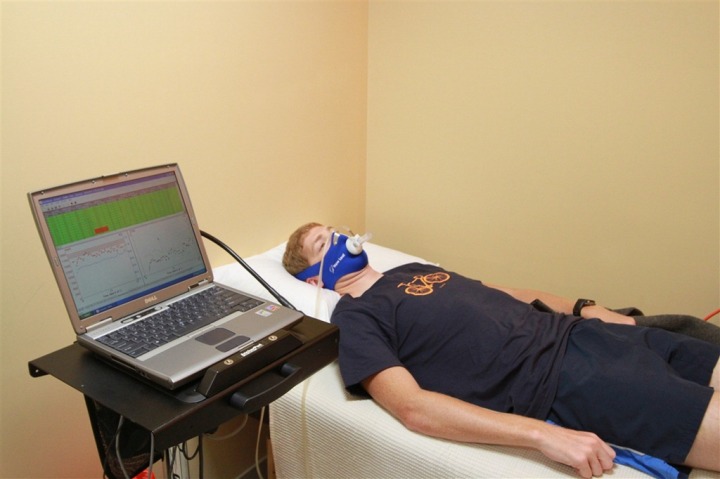
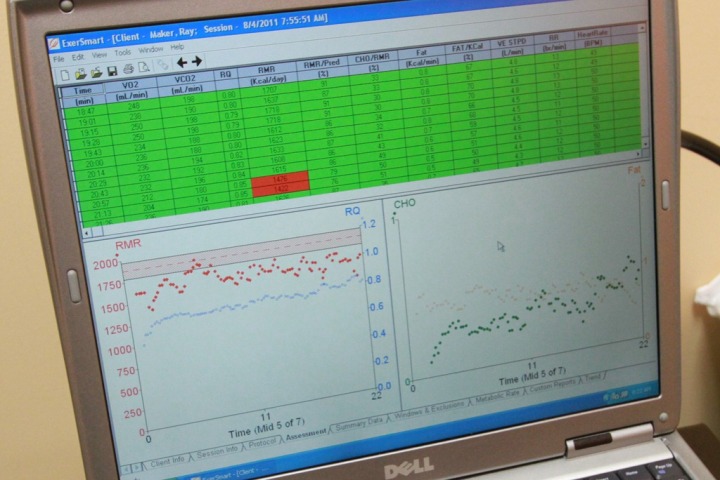
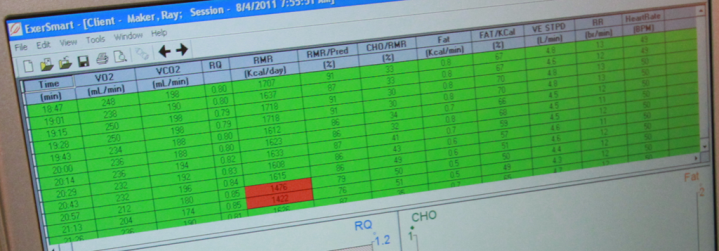
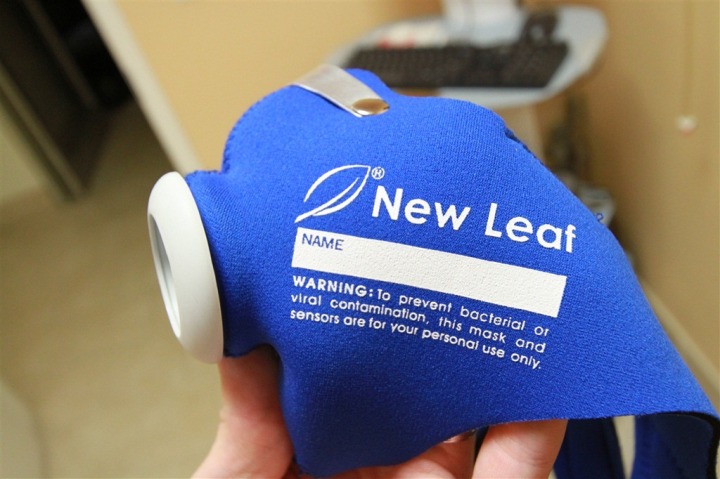

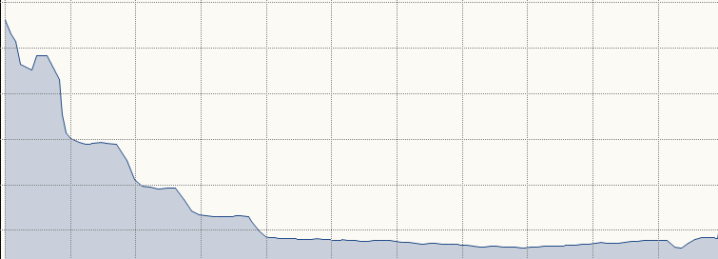
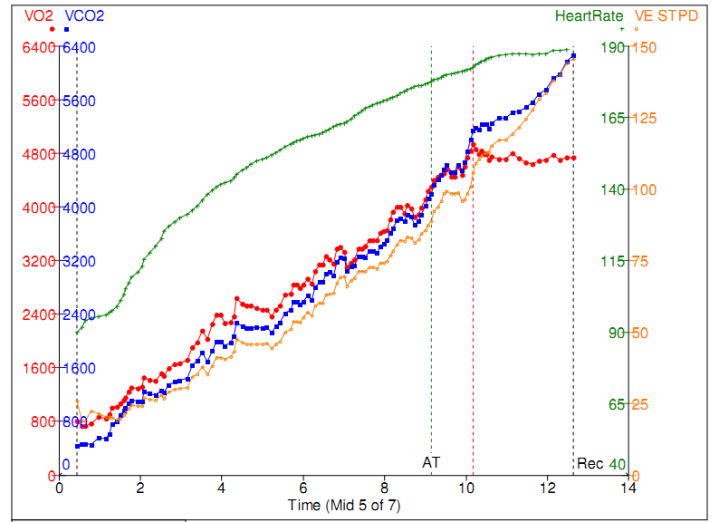

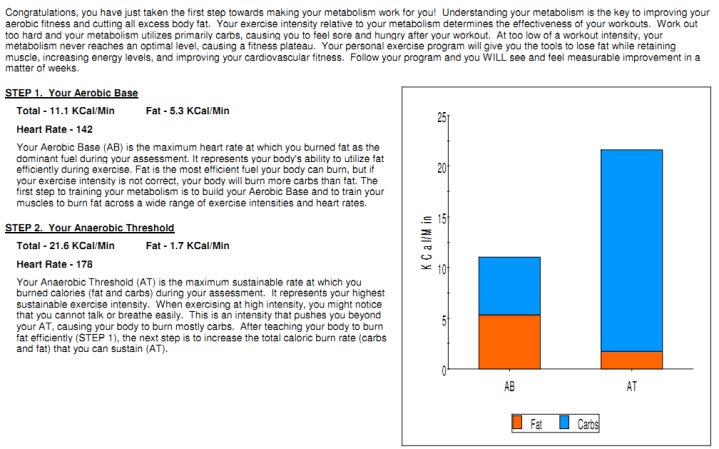
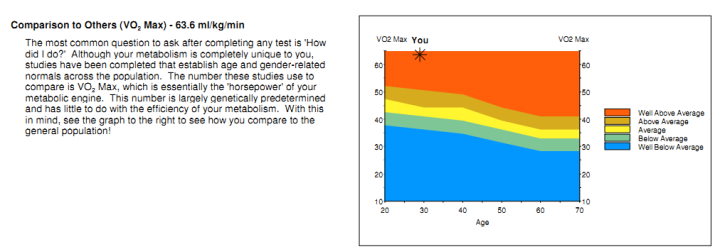
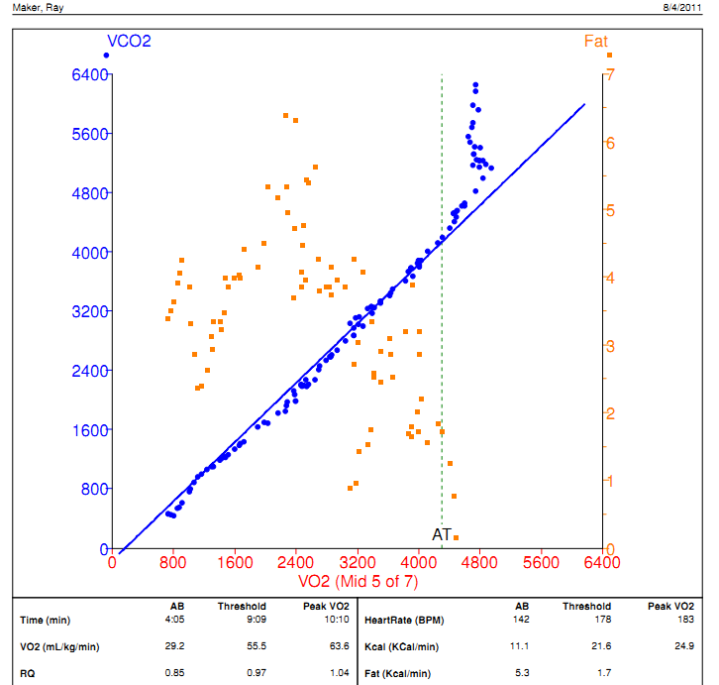
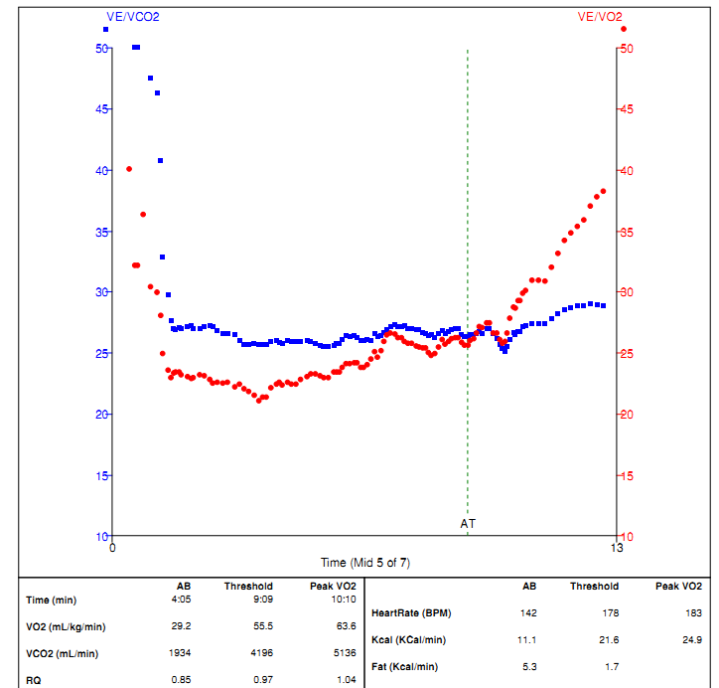


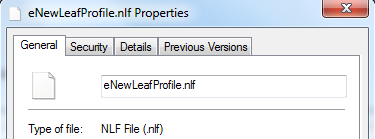
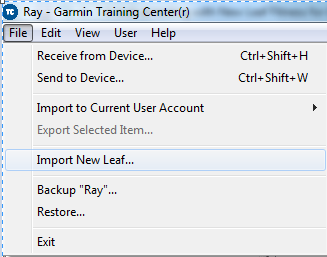
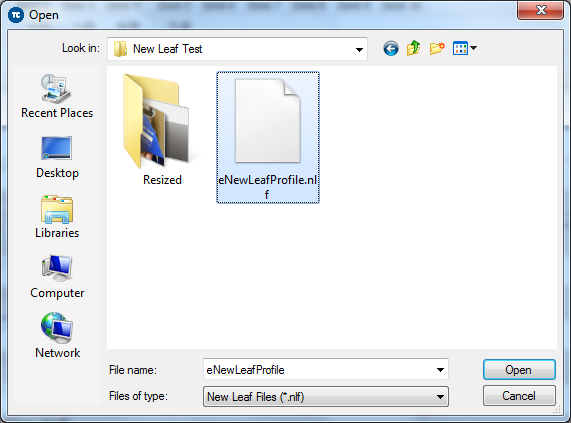
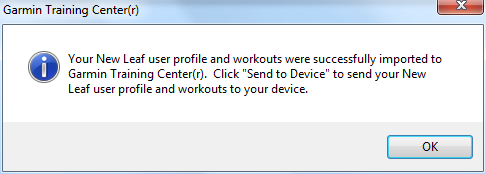
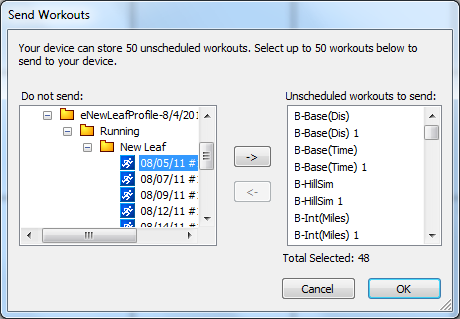
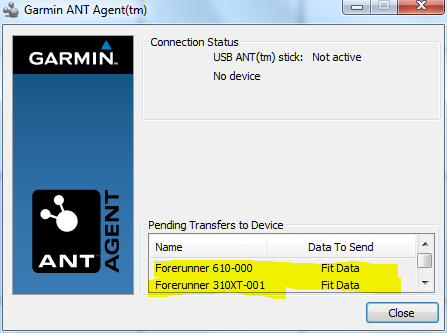

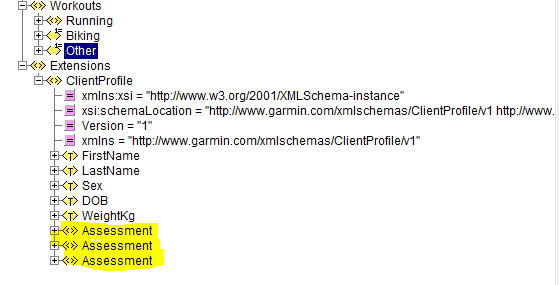
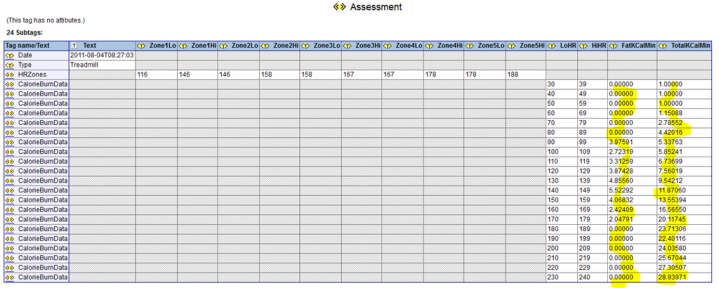
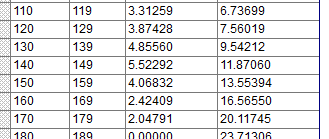
















What? No crack before the test? LOL
Great post, thanks.
Great post. I’m very interested in this theme. Do you know which is the software for the test of VO2Max? Thanks
Great review as always, though 12 hours without food and a max intensity run sounds brutal. You mentioned the Garmin uses the data for cycling mode as well. I’ve seen this argued endlessly but my understanding is that you’ll be burning a different amount of calories at a given heart rate while cycling than running. I use my FR 610 for Weight Training as well as running/ biking and would love to have some idea how many calories I burn during 90 minutes of weights. I probably burn a different amount of calories during a heavy leg day, arm workout, and a 10 mile run due to the size of the muscle group being used no matter how similar the HR. To be totally accurate you’d almost need a leaf test for each workout the watch is used for?(Run, Bike, Chest, Legs,etc..)
This is really useful! Seeing the reduction of energy used from fat above the aerobic threshold appears to confirm the value of racing ironman distance races at an aerobic pace. I’m curious whether the ratios of fat utilization are unique to each individual or if the trend generally applies. Thanks for making this available to us.
Ted
Surprising that the Edge 500 isn’t on the list of supported Garmin devices.
Before you got this test I assume you always used Garmin’s default HR/speed/distance calculation for determining calories burned, correct? Have you seen differences in the caloric burn numbers since adding in the New Leaf data? Or are they pretty similar?
I understand that VO2Max gives a lot more info as to what type of calories you are burning, but it would be interesting to see what differences you are getting before and after New Leaf.
I ask this because (and this may be more a Garmin unit issue and not related to this topic at all) I find that my FR305 and Edge500 give very different calorie burn levels for cycling, with the FR305 saying very high number of calories burned, but the same ride on Edge500 being very low. I thought they had the same algorithm for calculating calories burned while cycling, but maybe not?
Thanks for a GREAT post!
Ray,
Where did you get your most recent test conducted? I am in the DC area as well and haven’t found a decent lab to run this test, or at least that will call me back.
Is there any particular reason why they didn’t want to give you all of the data?
This is a great post, I’ve wanted to have this test done after getting a HR monitor and being surprised at the change in number of calories burned per mile.
BeefTrain,
I am looking at getting the FR 610 and I am
also into weightlifting don’t really run or bike but would like to eventually. Exactly how do you use the 610 for weightlifting? I like the vibration alarm and would like to incorporate this into lifting. Thanks.
Mickey,
If you want you can create a custom workout in the training center but I find that simply using it to monitor my HR and tapping the lap button after each set allows me to see how long I’m resting between sets. I’ve began lifting considerably faster since I started timing my rest period.
Info@BeefTrain.com if you have more ?’s
I had a VO2Max done in a non-New Leaf facility and wrote a long formula using the Calculated Fields plugin in Sports Tracks to calculate my “real” calories after each FR305 import. My “real” calories calculated off my actual VO2Max results are very close to the calories calculated by the Garmin. So much so that when I do not have access to Sports Tracks (i.e. travelling), I use the calories given by the Garmin as a reliable approximation.
The Garmin calculated calories correlates much better to my actual VO2Max data than any number spit out by any of the multitude of iPhone apps I use (i.e. Runmeter, RunKeeper, iSmoothRun, Digifit among others).
I should add that I use the iPhone apps in conjunction with a Wahoo dongle which is picking up data from the same heart rate and footpod sensors used by the Garmin.
And like I said, the Garmin comes much closer to my actual calories calculated as per my VO2Max results.
Great post, love the details. Referred it on the SportTracks forum as an indicator for the TRIMP calculations. I thought the calorie burn per HR zone was a great indicator of this with double the burn at 160-169 as at 120-129.
Is New Leaf USA only?
That’s indeed intersting. I normally use my Edge 500 and leave the 610 on while indoor cycling, and caloried on the 610 are always lower than the edge 500 for the very same workout (they use different Firstbeat algorithms as long as I understand).
Since Firstbeat and Garmin released the R-R recording, I’ve been comparing to the results on Firstbeat athlete, and the calories are even lower than the ones reported directly from the 610.
Great post as always.
Ray, I would love to see a follow up for cycling comparing calories calculated from your power meter and a Garmin device using the New Leaf method.In other words the Garmin not reading the power data. My experience with a Forerunner 305 is that the Garmin calculation is way higher than results from a powertap.
I’m an engineer, so I love the details and the accuracy with which you are trying to measure your caloric burn. However, given the inaccuracy of nutrition labels–or perhaps the difficulty in eating precisely what is covered by a serving or knowing precisely how many calories have been ingested, I do wonder at the necessity of the test. Certainly, it is fun to see (inherently, I am a science and math geek 🙂 ), but how do you intend to use the results? Similarly, for everyday athletes or fitness fans, I think that ballpark caloric burn formulas are generally sufficient, and that truly listening to hunger cues while eating a wide range of foods–with a focus on less processed ones–is the best way to keep one’s weight in check.
Thanks for the fun read!
How did the test numbers compare to your past tests? I have heard mixed info about the data coming from newleaf tests.
There is a post in the Garmin Message boards that goes over a similar process to manually modify the XML files. Once I did that, the calorie numbers my Edge 800 and FR310 spit out are nearly identical to the numbers I compute based on a real VO2 max test. These numbers are way different than the defaults I have gotten from any Garmin device from either the HR computed method or when they base it on your age/weight/gender info. The Edge705 was always way high, the FR310 and Edge 800 on the low side I believe.
I was tested separately for biking and running so have individual numbers. Your HR zones will likely be lower on the bike but your calorie burn rate will be lower as well. So for a given HR, the calories burned will be pretty similar across sports.
One person asked about the fat burn rate and if it can be used for everyone. Nope. How efficient your body is at burning fat at various efforts really depends on your recent training. The more long slow workouts you do, the higher the fat percentage tends to be be the lower HR ranges. If you have been working out a lot right around LT, you’ll probably burn more fat at higher HR value.
Hi Ray! Who needs an XML parser when you’ve got Excel? I do that all the time in my “day job”. I’ve sent you an .xlst file that should do the job (assuming I’ve got your email correct) – give it a spin…
-Bill
Hi Bill,
Would you care to share you .xlst file via dropbox or something?
Cheers,
Nickel
I’m going to take a guess that Bill won’t mind me sharing. Here’s the template he developed: link to sites.google.com
Thank you for the excel file. I have a question: I put in my data for each zone, but don’t know how to save the file so that garmin will see it. Can someone help me?
Very interesting review Ray.
Once you have transferred the lew leaf data on to your device, its there and you no longer need to use Garmin training center? I hardly use the thick client, I rely primaraly on garmin connect. The calorie consumption etc.. will be transfered from the devide to the web app as well? So I’d only use Garmin Training Center to transfer the file to the device?
Cheers
Erik
Very interesting post! As many others have suggested, I too would be very interested in a follow-up with comparisons of caloric burn calculations for various devices, as well as an extended discussion on how to implement non-new leaf vo2max test dats.
Thanks for a great blog!
Great post Ray! One question. I know with New Leaf you can get separate tests done based on using a treadmill and a stationary bike. Can you do both tests and upload each set of results to your Garmin unit so you have more accurate information for calories burned when running versus biking?
I’m really curious about making my own New Leaf file, as I have the data available from a previous VO2Max test. However the one set of data that I don’t have is the calorie numbers for resting, I only have data for activity (treadmill/trainer).
Any idea how this resting data is used? From looking at the New Leaf file, the resting data could be what populates the “Other” assessment section, but I’m not sure.
Thanks for the review. How did you find the testing center? I’ve been to the New Leaf site but they don’t seem to have an easy way to find a local testing center.
thank you so much!! this is a brilliant post.. i knew that it must be possible to upload any VO2 max test potentially but i never would have had the time or patience to figure out how to do it, nor would i have been able to do the newleaf test near where i live. next VO2max test i do i’ll try this out. cheers!!
quick question: are you able to upload different profiles for different sports? my understanding is that the fat/carb ratio per heart rate is very different if you are cycling to if you are running, for example. (in fact, the thresholds should be quite different as well – i understand that this is because you are using a very different amount of muscle mass in each sport and it is the number of red fibers in your muscles that determine the oxygen uptake)
I’m curious to know if the new calorie expeniture calculations provided by tour New Leaf active metabloic rate test are much different then the original method used by Garmin?
I’m curious to know if the new calorie expeniture calculations provided by your New Leaf active metabloic rate test are much different then the original method used by Garmin?
Joseph, I’d just basically put in zero calories burned for any HR under 90. If you have that low a HR, chances are you aren’t burning much difference than your base, which is generally excluded from the exercise calorie burn rate anyways. So the resting HR really doesn’t impact the calorie computation.
Also, there are 3 separate profile sections in the same file for each of the 3 sports, run, bike, and other. You can fill each one in with the numbers specific for that sport.
I’ve whipped up a crude but working Windows app that can generate a New Leaf data file that Garmin Training Center will accept and upload to your device.
The app is written in C# and requires .Net 4.0. I’ve included both an exe and the source code in this zip file.
link to fixedvancouver.com
Hi,
I tried your app but it doesnt works on my computer. Do you know why?
All open correctly but i can not generated my data.
Thanks,
Sam
Really, fasting? I have an appointment tomorrow Jan 16th at a facility in DC area, but they never even mentioned fasting to me for a noon test time. Now I wonder that they even test correctly. May cancel to save time and money. It makes perfect sense though for the same reasons why we fast for glucose blood testing.
I saved your NLF file onto my MAC computer and then uploaded it via Garmin Connect into my FR610. Your HR training zones did end up on my Garmin, but the calorie counter during my workout was counting 1 calorie per second. I know that’s not right. On enewleaf.com under FAQ, they stated that their system was not compatible to MACst. I wonder now if those files send crazy data to the garmin via the MAC computers. I had to reset my watch to factory defaults to clear everything out. I had hoped if it worked with your data, I would just change the zones and calorie values to my own.
Anonymus…
Post your *.NLF File…
I will take a look why ist counts wrong….
I was excited to find New Leaf, and your post, and take my fitness to a higher level. However, working with New Leaf has been a terrible experience.
My test administrator, like the one in this example, doesn’t have eNewLeaf so I was sent a file to import. However, that file was not the proper .nlf file. Now New Leaf is telling us that we must pay more to get the .nlf file. For me, if I want it into my Garmin devices I have to pay a subscription monthly to eNewLeaf; to the testing center, they must pay more also.
How has this been so easy for other users? I have been going back and forth with New Leaf for more than a month now and their answer, “sorry, can’t be done w/out an eNewLeaf subscription”.
I do not need the workouts from eNewLeaf. I simply want the HR data from my test into my device. Their site (NewLeafFitness.com) even advertises the use with Garmin but never mentions a monthly subscription AFTER the expensive initial testing. Seems like a scam to me.
Hi RSW-
Can you shoot me an e-mail via the contact page? This doesn’t sound right at all, I’d like to get a bit more details to try and address it with some folks.
Thanks!
I just sent a DM w/ info on my NewLeaf debacle. Thanks for any help and insight you can offer.
RSW
Hello DC Rainmaker, I found your article about the NewLeaf metabolic testing (VO2 max) that you did at Equinox very interesting and wanted to help you elaborate and get some more info on it for yourself and your followers. I am a metabolic tech for Life Time Fitness in Lenexa, KS and have a MEd in Exercise Physiology and do these tests regularly with the newest version of the software that would allow you to get the raw data from your test if that is something that you are still interested in. Shoot me an email at epyles@lifetimefitness.com and I can get you an online access to that software and walk you through the process. I analyze and prescribe exercise based on this data regularly, as well as teach people how to use their Garmin or Polar devices by syncing this data to their respective monitors, so feel free to hit me up if you want more info on it and I’ll do what I can to help you out bro! Keep up the good work, and looking forward to your next posts!
– Eric
Doesn’t really matter if you’re cycling, running, or swimming. All your body can recognize is effort and that’s translated into signals to the CNS which will control your HR in an active way as a mean to try and recover your body from effort (or rather keep up with it). Kcal expenditure should be the same for every HR zone independent of sport. The only difference here is that you’re not so efficient cycling as you are running, and that’s what may be confusing sometimes, but what it really comes to in the end is that your HR won’t rise in the same manner cycling as when running (the slope is different).
Hi
I run these tests for cyclists in the UK. The most useful piece of information is not the VO2 max (which only tells you how much air you breathe in) but the chart showing the % calorie utilisation between Fats and Stored Glycogen.
As the body has a limited amount of stored glycogen this is really useful for pacing long distance events and not over or under cooking it.
The results are very individual an do differ slightly with different sports for the same person. For example I have found some people who really burn through the glucose at above 120 bpm and others who btw are excellent endurance athletes who have a very high utilisation of body fat to some very high heart rates.
As usual with all these things – its not the result but how you use the information to add quality to your training
Simon, I believe you refer to the RER – respiratory exchange ratio. And yes you’re absolutely right. Discovering the HR at which your RER is below 1.0 is crucial for endurance athletes. Though, training above it is the way to improve it. Nice post! Never seen anyone talk about this before, and it’s very important!
Hi Sandri
– yes RER.
An example would be, from the table above @ 150 bpm.
13.5 kc/min and 4 of these from fat so 9.5 from stored glucose. Stored glucose is limited to about 2000 Kc total.
That would only last approx 3.5 hours. So if an event was likely to be longer than 3.5 hours, the fastest pace DC could do this at would be 150 bpm.
PS there is a way to get the raw data into excel.
Did anyone ever clarify New Leaf compatibility with the Edge 500? New Leaf’s site says no metabolic compatibility (at link to newleaffitness.com ) however it looks like it was added in version 2.20 for the Edge 500 (via link to www8.garmin.com ). Anyone know for sure?
Hi,
They send me a cow file no nil… Do you have any suggestions?
Thanks,
Lorenzo
Eek. For fun, try renaming the extension and see what happens.
Hi Ray, thanks, problem solver, I feel like an idiot 😀
Awesome! Good to know, especially for others!
Hello Ray, I’m sorry, my feedback was too late, it doesn’t work. If you would like I can sen you the file and you may test yourself
I’m in Chicago, where did you get this test done? i’d like to do it as well.
At Equinox. A few of the different Chicago ones offer the service.
Ray, thanks for the post. I saw in your data file that you have a “Base Builder 3” workout. Can you send that to me? I have the other ones from my own New Leaf test. Thanks!
Ray,
Is there a way to load the file without GTC?
Also is there a way to remove the file without a full data reset of the device?
Thanks!
Steve
Curt, if you’re in the north suburbs, I got mine done at “The Fitness Pursuit”.
I’m not immediately aware of any. I wonder if there’s a Plug-in for Sport Tracks that will do it…hmmm…
Is it possible too put my vo2max test informations in my garmin withour using the new leaf test?
I pass the test at my school because i’m studying sport sciences but I don’t know how too put my data in my watch.
Thanks,
Sam
See some of the options in the comments, a few folks have made some cool little New Leaf file generators if you have the raw data.
I recently had the NewLeaf testing done and it turns out that the company no longer exists, but the testing center (Mount Auburn Club in Watertown, MA) didn’t mention this fact and did the testing anyways. The tester sent me a file, with a “.cow” file and after talking with the technical staff at NewLeaf, no one can actually convert the file to the required “.nlf” format. Does anyone have any suggestions on how to process this file into the required format?
Thanks,
Brian
Hi everyone,
Is it possible to make a new leaf file with my exel file of my VO2max test? If yes. some one can help me? I can send my Exel file by email.
Please let met know.
Thanks,
Sam
Interesting post.
Here i would love to hear/read it from you:
Is there any Practical difference between readings in your garmnin/suunto/polar wrist top you use when you workout and the LEAF thing.
I mean did your training zones or VO2 data change dramaticly?
Your answer will help my decision to do a similar test in my city(Salonica -Greece) or continue using my Suunto Ambit as i do till today.
There’s no difference in terms of straight HR readers. The primary benefit is the calorie readings – which are different. Additionally, the specification on HR zones. Though there are many different lines of thoughts on HR zones, so there is no one right answer there.
In my case, my zones were pretty close to what my coach assigned me – so that was good validation of that (my zones didn’t change).
Love the post. All of the comments are great to read. I do the NLF metabolic assessments up here in Southern Ontario (Burlington). I’ve been doing them for quite a few years now and have had great results from my clients. I like hearing other comments on how the assessment went for them as well as. I mainly use the active assessment and not so much the resting. The clients I train mainly just want to know how fast they can go for the fastest results. It’s a great way to learn your numbers for intervals as well as active rest days.
Thanks again for such a great post.
Chris,
What is the name of your facilitity that does this? I’ve been looking ALL OVER the web for a good one!
I have been trying to find a location to do this testing. The location finder on the enewleaf.com site said there were no facilities for 500 miles. I finally emailed them directly and learned that the company has been sold. As a result, there is no longer a central database of testing locations. The recommendation of the lady I spoke to was to simply call around and see what I could find. I wonder if the company that purchased New Leaf is going to continue researching, updating, and using the testing or if this is the end.
Okay, so I found a nearby location that offers MicroFit testing. Is this similar to New Leaf? Can its results be used in place of New Leaf’s?
I couldn’t find the four week exercise program they gave you. Could you possibly email it to me. I plan to do the test and for me it’s about improving my fitness level so I’d like to see how they take heart rate zones and turn them in to exercise plans. Thanks.
Eek, strange. You’re right. I think I see the problem though – it’s actually in the New Leaf file itself, and then spits itself out as workouts in Garmin Training Center. Let me poke around and try and figure out a way to get that in a visible format.
If you open up thew New Leaf file itself in Notepad you can kinda see what they’re doing.
I’m currently looking at the new Amiigo and would like to set up something similar to what you have done so I can keep the bracelet on 24/7 and keep track of my calories burned everyday. Seeing that the New Leaf facilities are out of business, where can I get the full test like you did and not just a RMR test. I have a Lifetime Fitness right next door but they only do the RMR test. Thoughts? Btw, I live in the Chicago area.
Hi DC. Same question here — now New Leaf is out of business do we have the XML schema definition so we can create our own NLF?
Yup, earlier on in the comments a few folks posted small tools (Excel based and otherwise) to create the New Leaf files based on known values.
Thank you for the reply. I’ve been able to download the two XSDs from Garmin’s own site (if you follow the path in your own new leaf file. Remembering that the client profile path is in lower case!) , but it may be easier to use the Excel tools.
RAY
In the zip file one pdf is included twice. Raw Data 1 and the one named just as your name. Maybe some other has been accidently excluded. Maybe
Does anybody know whether zones like ….,100-104, 105-109, … work in 910XT?
I got the raw data of my VO2Max test so I am able to “hack” any kind of breakdown. Moreover the calorimetry data do not know that they should follow the rigid zones like 140-149, so I am wondering that I should create some freestyle New Leaf profile like ……,130-134, 135-138, 139-146, etc
I know I could try it without asking others, but I have lots to do with the data I collected,so I’d like to save some time.
It works, I tested. The only thing as a limitation is the number of HR ranges which cant be more than 21.
In the meantime I found a good post about metabolic testing: link to fitminusfiction.com
Enjoy! 🙂
I recently did a VO2Max test (at some fancy gym..-today), the test had a 8 min warm-up which I’ve never heard of before, then the 14 minute..well I’ll call it a run-a-thon with a pick up at the end. Kinda of like finishing a 5K. My heart rate was at most 170’s, and I’ve seen it higher while training and doing over stuff (used to be a 400m runner, now a triathlete). I had more in me for sure (aerobically) but was feeling the leg tiredness as I just started back running in March (knee surgery). I wanted to ask the tester: Why don’t we just start at a 6:45 pace for a few minutes and ratchet it up to low 5:00s? We stopped at 5:50’s pace when my legs were tired of already running almost 3 miles (1 at min warm up, 2 during the test), but I was far from falling off the treadmill. I surely had more in me. Was the 8 minute warm up needed, or even the 2 min increase need for so long? When running repeat 400’s back in the day I recall being dead in 55 seconds or less. Should I either ask for money back, have a ‘do-over’, keep the results, or chalk it up as a loss? Of course the subtle suggesting of a ‘custom’ training plan followed during my visit…
Scott, I made my 3rd test to get a good metabolic profile. I am just an enthusiastic guy being ready to make some research about exercise physiology, but I aas the first one to question the indirect calometry results at that test organizer. Finally they had to send the so-called measuring cube for a recalibration after my complaints. The third test ehich was a gratis of course, gave much better results, but I was unhappy because they did not follow my proposed protocol. Thus I could get steady state only when resting. Let me attack all these testers including the place Ray has visited, they dont even consider that any good indirect calorimetry estimation works to get steady states in each of the HR ranges. So if I need to have data for 15 ranges, appr 1 hour is needed, because you have to find the necessary pace and/or gradient eg to get a HR constantly being in the range of 100 and 109. After 4 minutes spent at the same HR you can say that it is what happens at that HR. Maybe a bit earlier, but never less than 2 minutes.
Hi!
Anybody knows where can I do a New Leaf test in San Diego, CA?
Thanks!
Great post. I’m curious to know whether you ever compared the results from this testing to the results that other, more rudimentary or crude calculations of the metabolic rate, as well as the max HR, would have yielded. I understand that, especially for highly fit individuals, we should expect significant differences between the two, with this kind of testing being most accurate. But, I’ve never seen any actual comparisons. Would love to see that here.
FWIW – LifeTime Fitness bought out the assets of New Leaf and will be revamping the testing as part of their existing “My Health Score” test suite, the two specfic tests DM mentions in this article have been rebranded the “CaloriePoint” test and “CardioPoint” test by LTF. I’m not sure if the licensing out of the test suite to 3rd parties will continue or not. Although I am also a trainer, I don’t work for LTF myself. I have a few friends that work for LTF though and I’ll see if I can dig up anything about licensing.
If you’re looking to take the New Leaf tests, the people that already have the equipment and software will of course still be offering them. Otherwise, you can take the new enhanced tests at any LifeTime Fitness location.
See: link to tcbmag.com
Forgot to mention earlier that all those tests where there are no steady state phases within different HR ranges overestimate total calories and underestimates fat calories. This statement is both from researches and my latest experiences.
Fantastic detailed, and well structured article. Thank you.
I also have garmin and newleaf and sad see newleaf has discontinued product support while offering capability at Lifetime. Kudos to those who have helped the community by writing some translators.
I have an additional issue…realized that my exercise files are in some sort of encoded binary XML format (not viewable by standard text editors) instead of the usual plain text XML formatting. Has anyone else seen this issue?
I just had my first-ever VO2 test done with New Leaf equipment in Chicago yesterday. I really wish that I had found your blog 48 hours ago so that I would have known what information to expect them to give me. After the test, they emailed me three files that represented only a fraction of the info that Equinox provided you, and did not even include a precise figure for a VO2 max (or “Peak VO2”). I was able to see on the chart that my HR at the point I reached a RER of 1.00 was 178 bpm, and that is associated with the number 8625 on the VO2 scale, after which the person administering my test immediately reduced the intensity. When I examine your data, it looks like your VO2 peaked at something slightly higher than 4900 then plateaued around 4800 as your test proceeded to your max HR. So, just doing the simple math on the numbers (assuming the units are ml/min) and applying our respective body masses in kg, your VO2 max is 63.2 (pretty close to the 63.6 that appears in the New Leaf report). Applying the same logic to my charted numbers and body mass, my VO2 max would be 124.3. Clearly there is either something wrong with the calibration of the equipment used for my test or my logic, or perhaps both. I presume it goes without saying that I am not anywhere close to contending to be the world’s fastest land mammal, and would expect my VO2 max to be something in the mid to high 50s.
One should note that the more expensive and medically used equipment such as CareFusion, True 2400 and the Jaeger systems are much more precise and have rigid calibration sequences.
They also have much better data points to view in terms of the data and what it might mean. If the machine will not calibrate against known gases and standard flow, you can’t run the test. The New Leaf self-calibrates without these functions, which in my opinion not accurate. The result is the machine may not be working properly, yet the technician has no way of knowing this until they have run 20-50 really bad tests. So, results have a tendency to be very inaccurate when the machine will not measure properly.
The sensor in the New Leaf is an O2 cell that is based upon electro-chemical reactions. That means over time as more air passes through the cell, the electrical output, and therefore the meaning of the data changes greatly. Frankly if you are spending $150-250 for a test, make sure it is accurate or don’t waste your time. Normally, in this situation, this cell is good for 6-12 months and I would venture if you talk to someone with one of these systems, the cell was never changed out, even after excessive use which would degrade this electro-chemical relationship.
If this was a really good system, why didn’t it make it in the marketplace? That should be a clue there might be problems with the system and approach. Buyer beware! LifeTime fitness buying out this company and running for their own purposes is not necessarily an endorsement of how good the system is scientifically. If NASA bought it, then I would really take notice and give it more credibility.
First off, you need to use a system that has rigid calibration standards. I would suggest the really high values from New Leaf, besides calibration error and not working properly, were also from estimating, not actually measuring VO2 max. Estimations simply don’t work when you go to AT and extrapolate what the max is from that number. Real max is real max, period.
The second component is whether or not the person has the training and insurance to run full maximum tests. This is important for safety. A personal trainer going through a one day course on this is just not sufficient to understand the myriad of metabolic responses that show up in testing. How many tests has the person done? What is their training? Look for a minimum of a master’s degree, and preferentially higher in education. Have the people who have gone through this been able to improve their results or performance? I would caution that athletic clubs are doing sub-maximal tests and telling people they are maximal tests. There is a really big difference. If someone hasn’t performed at least 500+ tests I am not sure they will have enough familiarity and base to make use of the information. Familiarity and practice does build expertise just like education.
A final factor is can they really interpret the results so you get meaningful application beyond the written report? Reports vary greatly from system to system, so just handing you the information does not mean you will understand what to do with it.
So, look for really good equipment, used in either medical centers or at universities, make sure they have advanced education, have insurance for this procedure, emergency procedures in place, and have a significant track record in using the information to improve the individual taking the test. If you use that list, you might find your view of New Leaf as a viable option is a little different than first take.
Except, the point of the platform (and this post) was the system that automatically generates a file to import into your Garmin unit to get more accurate calorie burn information. All of the other facilities you mention lack this capability.
I do agree however that having someone know what they are doing is important, as I’ve done a test at a facility elsewhere that the person simply didn’t push me hard enough.
Importing bad data into the Garmin is not as good as manually putting it in when correct.
In any way I guess that even an improper test gives a better estimation than the factory-built general algorithm of Garmin watches.
As noted previously, VO2 testing really requires good equipment and someone who knows how to properly administer a MAXIMUM test. Sub-max tests for performance are close to useless. Also, it is very difficult to really tell about heart rate ranges and actual kcal expended unless the tester has performed a large number of tests and knows how to use the information for this purpose. A lot changes when you go steady state, not the least of which is the body keeps shifting to slightly more fat as time goes along and there is heart rate drift at various points. In the world of how this all works, I think there are at best 50 people in the USA who could do this correctly, and finding them is a bit of a chore. If you can ask the right questions, you can get the right person. Remember, it’s both the tester and the gear. The person has to have the ability to extrapolate the data beyond the various computer screens, and personal trainers look at the graph most of the time and use those points it generates. If you are going to spend the money, talk to the person about how you are going to use the data in your exercise and training.
I would definitely agree that the folks who administered my VO2 test with the New Leaf equipment were focused more on the calorie burn and weight loss piece as opposed to the performance piece. As I’m in Houston on business for the next two weeks, I’ve reached out to the Ironman Sports Medicine Institute to see about repeating the test at their performance lab. Now, with the information provided in this blog, I know what questions to ask before committing any more time, energy, and money.
I didn’t get the .nlf file apparently in the migration to Lifetime Fitness the new system doesn’t produce the file directly. I got the raw data and started hacking the Excel spreadsheet above but I wanted to verify something first. The raw data has multiple readings at each HR reading and I was just going to average Fat and Total values. Is this correct or do they fit some curve to the values? I doubt it matters much as the delta between results is pretty small but just wanted to verify because when I check Lifetime’s chart and look at the %fat burn hotspot and try to match it to the raw data the averages don’t line up. Again, probably not an issue and it might just be the chart using some arbitrary smoothing to make it look pretty.
Thanks for the help.
You mention in the blog how easy it would be for other platforms like training peaks to integrate this. I know New Leaf is dead but have you talked with Garmin at all about building in a feature of Garmin Connect that would allow manual entry of data if someone has done a VO2 test?
Yeah, we have chatted about it a little bit. The challenge for them is that it’s a tough ROI proposition in terms of mass-market and people wanting it.
That said, I think with the shift towards more heart rate focused stuff (like VO2Max, Recovery, etc…), that might eventually crop up down the road.
I was reading an NYT article about an equation the University of Trondheim came up with the could quite accurately predict your V02Max. Would be curious how your own results compare, as they avail a calculator here: link to ntnu.edu
The article I saw it in was here: link to well.blogs.nytimes.com
And the paper that Trondheim published on the analysis is here: link to ncbi.nlm.nih.gov
Sometimes these types of caculators do work. However, the point of VO2 max is more about where you are on your own scale of un-trained to trained, as the fitness and health benefits occur with burning kcal. Additionally, knowing AT as it compares to max allows some idea of how to adjust anaerobic to aerobic training. That is something that estimation tests can’t do. I still favor real testing because of both prediction error and the extra ancillary data that helps interpret individual steps to personal goals.
@SS, I saw the NY times article a while ago when I was doing some research on VO2max after getting spurious results from a New Leaf test. I used the Trondheim online tool (which is simply a questionnaire) to “calculate” my VO2 max. The result was 61 ml/kg-min compared to 52 using a properly calibrated metabolic cart (NOT a New Leaf machine!). While it is certainly fun to use the Trondheim survey, and interesting to ponder the possibility of accurately determining a person’s physical health from that set of questions, the results from it are not realistic for me. To put it in perspective, the VO2max of 52 implies the capability to run a marathon in about 3:04:00, which is relatively consistent with the fastest of the 12 marathons I have run in the last 11 years. If my VO2max were 61, or the Trondheim tool, I should be able to finish a marathon in about 2:42:00, which requires running a pace of 6:10/mile. In peak condition, 6:10/mile would be my pace for an all-out 5K effort. If you are interested in detailed, real-life actionable information regarding VO2max, “The Daniels Running Formula” written by Jack Daniels, PhD, is an excellent resource targeted towards athletes and coaches. If you just want to know your VO2max and have a recent all-out race result, you can simply plug that time into this online calculator (which is based on tables published in Daniels’ book) to get a fairly accurate VO2max estimate: link to runsmartproject.com
Awesome, thanks Andy – that’s exactly what I was wondering.
I agree with Andy as my experience with NewLeaf is they definitely over-predicted VO2 max by quite a bit. I found their equations that tried to do this got much worse as time went on, and they weren’t very good to start with. Simply put, you can’t take sub-maximal data and then extrapolate that to a real VO2 max, way too many variables. In addition, simply systems like NewLeaf, Korr, Metamax and Fitmate generally loose the ability to measure ventilation correctly after 150 liters of airflow per minutes. Large people or more trained athletes will often go well beyond this in a proper test. In addition, a number of these systems don’t measure CO2 which is essential to see what is going on metabolically. Add the issue of not having a good calibration protocol to ensure accuracy, and it’s easy to see why they tend towards inaccurate data.
I have found the best systems are expensive, and that is why they aren’t found everywhere. These are generally 30K and above, and that is why you don’t find them except in rare instances in regular gyms and personal training centers. Plus, my view is it really takes someone with a good educational background and experience with this to understand the particular testing system, protocols and how to use the information for the athlete or clients.
Just having a metabolic cart doesn’t make one a metabolic master. So ask what is the equipment (it’s either research/medical grade or it isn’t!), who is the test administrator (education and experience), and finally how much experience have they have with other people with your specific goals and needs. My view is they should have performed at least 500, preferably 1,000 tests before your test or they might not know or have experienced all the nuances necessary to make the data applicable to improving you.
And finally, maximal tests are light years better than sub-maximal tests for just about any fitness or sports training needs.
Ray. Thank you for nice review. In fact I decided and purchased 910 xt cyclo bundle yesterday..(after reading so many complains about new Fenix 2 ). So far I was runing and swiming in the pool and I am happy with the watch. (I also have fr 210 for more than 2 years and very happy with it. ).
While playing with the watch I tried to donwload the custom workouts from my calendar and training plan but it only allowes me to send to the watch the custom workouts that i created by myself step by step.. Is it correct or I am doing something wrong. It does not makes sense to me .. this way I have to copy (in fact re-create step by step) every single training from the resady garmin trainig plan in the custom workouts.. and than send to my watch … ? Its does not makes sense.. pls help …. thanks
My purpose of this test was to be able to run faster at a lower heart rate. I took the test at the Lifetime Fitness in Memphis and had the Active Metabolic Assessment that used to be called the CardioPoint when I had it done in 2010. The test is done differently now and I was not happy with my results at all. They base your workouts on your speed not your heart rate and my base, steady state, speed is so slow that I really want to ask for my money back. He wants me to run a 13:57 to a 20:00 mile where I have been running an avg 12:14 pace per mile. I just cannot get myself to run THAT slow. Also,my new heart rate in zones 1 and 2 are so broad that they actually start at the middle of my old zone 1 and go all the way up to zone 4. How can I change that much?
Has anyone else had theirs changed that much? I really wish I had known that I would not get near as much info/workouts as before. There is no way I can gauge my improvement and make changes to my workouts without going back in for an assessment.
Thanks
Sherry
Now that New Leaf has gone out of busniness, has anyone had any luck (or does anyone have any suggestions how to) getting their data out of the servers? Their site is still up, so the (ahem) data is in there somewhere, but at least my login was deactivated (and I’m assuming everyone’s has been)? I’m in the same boat as Sherry – I just had a test done in WA and did not like either the test or the type of results I got back. Instead of data that lets me know how I’m burning calories (fats:total), I get a nebulous “fat burning zone”… and the zones (only 3) are absurdly wide… I’d like to at least have the New Leaf data to compare, assuming I can get my data out of the last test, too. The test I did was with a company called CardioCoach. Ray, do you have any info about this group? They seemed pretty reasonable, but now I’ve dropped $110 on the test, I’m not as happy as I was with my NewLeaf output and data. (yes, I’m a geek (data nerd?)).
Unfortunately, I haven’t heard anything about CardioCoach.
Though, using some of the little tools people have posted in the comments section you might be able to take their data and then input it into the tools and get out a NewLeaf file for your Garmin.
I am a member of Lifetime who I have been told has bought enewleaf. They offer testing at the club for heart rate zones and Vo2 max. I am looking for a watch that I can download this file into to get the correct Vo2 max. I previously had the garmin 310xt which I cannot get to turn on now and I’m looking to replace it. I know the current 910xt comes with a Garmin ant stick. However i’m not sure if I need all of those bell and whistles. I was looking at the 220 and 620 but noticed those don’t come with an ant stick. Am I able to download the enewleaf files to the 620/220 using my old ant stick from the old 310xt?
The new Lifetime personal are not too helpful in this process and just want to enter my new zones and don’t care really about the Vo2 max. They are pushing the 620 though I’m not really a runner….
Unfortunately, the FR220/FR620 don’t support New Leaf files.
At best, NewLeaf will get you into the ballpark with zones. What they do at LF is not considered a true maximal test in any event. My experience is it is not a very accurate system as currently configured, so trying to put this into a watch will likely have you training at zones with a high degree of error and physiological irrelevance.
If you want a real VO2 max test, look outside LF for someone with advanced credentials, at least 500 tests as experiece and equipment which is medically reliable like Vmax Encore, True Parvo 2400, Oxycon Pro or Mobile, or Cortex. If they can’t explain in detail what to do with the zones, look elsewhere.
hi ray
I use rcx5 and keep gtrack my heart rate allways. I m 35 years old and theoriticaly my max HR is 185. but 1 week ago during 7 km race watch shows avarage heart rate is 189 and my %78 of running time excceds my max heart rate. The question is the basic theoretical HRmax formula (220-age) must be taken into account or it can vary? what about your experiences about that max heart rate myth?
Yup, it’ll vary. The 220-age is just a very very very rough guideline. Sort of a ‘better than nothing’ type of thing.
thnx mate
Glad I found this, Despite excellent nutrition and tracking macros and working out religiously I am not seeing results, I was looking at a New Leaf metabolic test, I had a RMR and Vo2 test done a few years ago, Seeing as how they don’t calibrate properly, I will be contacting the local hospitals wellness center for information
Do you know if the New Leaf files are able to be uploaded to the FR920XT? They were compatible with the 910…
No, after New Leaf more or less went out of business almost 2 years ago, Garmin stopped adding it into new products. The FR920XT doesn’t have it (neither does the FR620).
Thanks Ray! Love your site!
Eventhough Lifetime has some NL systems, they are not going to do a true VO2 max test, nor should they! They will do a sub-max test and then try to predict your maximum numbers. if you want a good test, here is what you should look for:
Test System: Medical Grade is the only way to go! Vmax Encore, Oxycon Pro or Mobile, MedGraphics or Cortex. Cosmed FitPlus and Korr Cardio Coach are in my estimation one step above NL and not near as good as systems mentioned above.
Expertise: MA/MS or PHD for testing. Don’t use a trainer that does this part time. You want someone who knows what you are going to use it for, and then will pick the appropriate test and correct interpretation. You need this so you get the application correct. Do they include a training program as part of the process?
Type: Sub-max tests are very poor at prediciting maximum levels and therefore don’t have much applicability at telling you how to use the information. In my book, it’s max or nothing, period. Also, test should be done in a clinical setting with medical procedures, waiver, complete test guidelines, instructions and safeguards in place.
Test cost: expect to pay $150-$350 for this because the good test systems are $30K and up, and there are supply costs with each test. If it’s $75 per test, then suspicion should be aroused!
Test experience: The person should have done 500+ tests to really get a good experience level to apply these to a wide variety of situations.
I hope this helps you pick the right person and test facility.
Thanks for the info, but I am actually only concerned about updating the calculations the 920 uses for caloric expenditure. My edge 500 with a NL metabolic file uploaded was 40% greater than the 920 for the same ride. I have a trustee tester here in the Phoenix area.
Dirk, the problem is you need actual O2 consumed to update those calculations. And that is where systems that are more accurate do a better job at measuring O2 all the way during the test, from low levels of exercise to maximal exertion.
Otherwise, you are just ending up with some type of estimate not a true measurment or number.
Ray,
do you know how they arrived at your calories intake for the day of 1651 kCal for “just lying in bed all day” ? If your BMR is 48 kCal / h, that’s 1152 kCal / 24h day. Where is 500 kCal missing ? Assumption for digestion and other internal organ work ? Your resting oxygen intake (204ml or 2.65ml/kg) seems to be consistent with the article that suggest that a standard assumption of 3.5ml/kg/min of oxygen intake when idle is overstated (link to gregoryhand1.wordpress.com).
Still, having seen your data, I cannot reconcile the BMR of 48 kCals, which is consistent with the Weir formula (BMR (Kcal/min) = 3.942*VO2 (L/min) + 1.106*VCO2).
Any thoughts ?
I am trying work back my own BMR on the basis of the raw data I got from my VO2Max test. I am very similar to you in both VO2Max and dimensions, but lack the idle state data (mine VO2Max was just a regular test, no lying in bed for 10 minutes !).
Thanks !
I’d love to say I know how they got there, or that I could ask them. But unfortunately I don’t know either. :-/
I’m sorry!
I tested via a new leaf facility in Mill Valley, California.
My 12 weeks of Data was manually input on Garmin Training Center App that is no longer supported by Garmin. E New Leaf seems to be non-existant in responding. Do you have any idea how to migrate the workout data from the old Garmin Training Center “App” on my computer to the mandatory Garmin Connect? I have a new 920XT and don’t want to manually input 90 days worth of Intervals that I paid a pretty Penny for…
Also, Garmin says I can’t build my own training plans on the new connect app…they say i have to manually input workouts on the Calendar. Is this true based on your experience with Garmin Connect? It seems ghetto for a $500 tri watch.
thanks!
I tested via a new leaf facility in Mill Valley, California.
My 12 weeks of Data was manually input on Garmin Training Center App that is no longer supported by Garmin. E New Leaf seems to be non-existant in responding. Do you have any idea how to migrate the workout data from the old Garmin Training Center “App” on my computer to the mandatory Garmin Connect? I have a new 920XT and don’t want to manually input 90 days worth of Intervals that I paid a pretty Penny for…
Also, Garmin says I can’t build my own training plans on the new connect app…they say i have to manually input workouts on the Calendar. Is this true based on your experience with Garmin Connect? It seems ghetto for a $500 tri watch.
thanks!
After performing 11,900 VO2 max tests I can tell you there is little relationship that I can see on VO2 max and RMR. RMR is primarily based upon muscle mass levels and functions to maintain life. One interesting note is that people with high VO2 levels can rest more effectively if for no other reason, lessened circulatory pressure. Unless you are extremely muscular for your weight, or really ill, a number of 10 kcal per pound is a good number and gets you pretty close unless you have an athletic or sports fitness need to get this actually measured.
I need the file eNewLeaf where i can get it
The company went out of business, no luck there unfortunately.
I recently had my RMR tested (higher than I guessed and surprised the tech to given my size)
Do you know of an activity monitor/heart rate tracker that allows you to input your RMR manually to give a more accurate prediction of daily calories burned? It would be great if one allowed manually RMR and body fat % entered to gauge progress.
So much useful information, thank you for taking the time to share your findings. This has honestly been one of the best pages found through Google in my life time. Thank you again for the first hand account! Stay curious and kind enough to spread the knowledge.
!
I just had an EMR done yesterday with New Leaf equipment. I was only given a printout of my results. I saw above that you can use an excel file to input the data. I did this, however, am not sure how to save file so that I can import to garmin. Can someone help me?
Does the information get onto my garmin or only Garmin Training center?
There’s a few people in the comments that have created little converters to do it, I’d check out those.
The challenge is that basically none of the newer Garmin devices support it now (anything new in the last 2-3 years).
Yep, they do not support fat calories. But what about Connect IQ Apps? Among those people who can code apps nobody is interested in how much fat calories were burnt?
And to be honest New Leaf profile is not just about getting fat calories, but also a good way to get a better estimation of total calories burnt.
There is a Connect IQ called Fat Burner. It is not 100%, but I have asked that we be able to input our own %. He will not allow us to enter cal/min burned, since that will change the calories calculated by the garmin.
This was his response:
I understand that it would be easier for you to input things as
cal/min, but this could/would lead to situations where the sum of fat
calories and carb calories are different from the calories recorded by
the garmin, so when I implement the option I’d likely go for the
customizable percentage approach instead
Do you have any information on how to use the heart rate data from the Garmin 305 to calculate calories?
Sorry, I don’t. Actually, I made the switch to Suunto some time ago.
This physical fitness tracker will certainly connect with your mobile device and send your alarm systems to your wrist, waking you with a physical vibration in addition to your phone’s audible alarm. With this watch’s ultra-comfortable, water resistant and also sweat-proof style, fitnesstipsweb.com you won’t typically require or want to take it off. It will check your sleep and also your daily task and also allow you to monitor your heart price throughout the entire day.